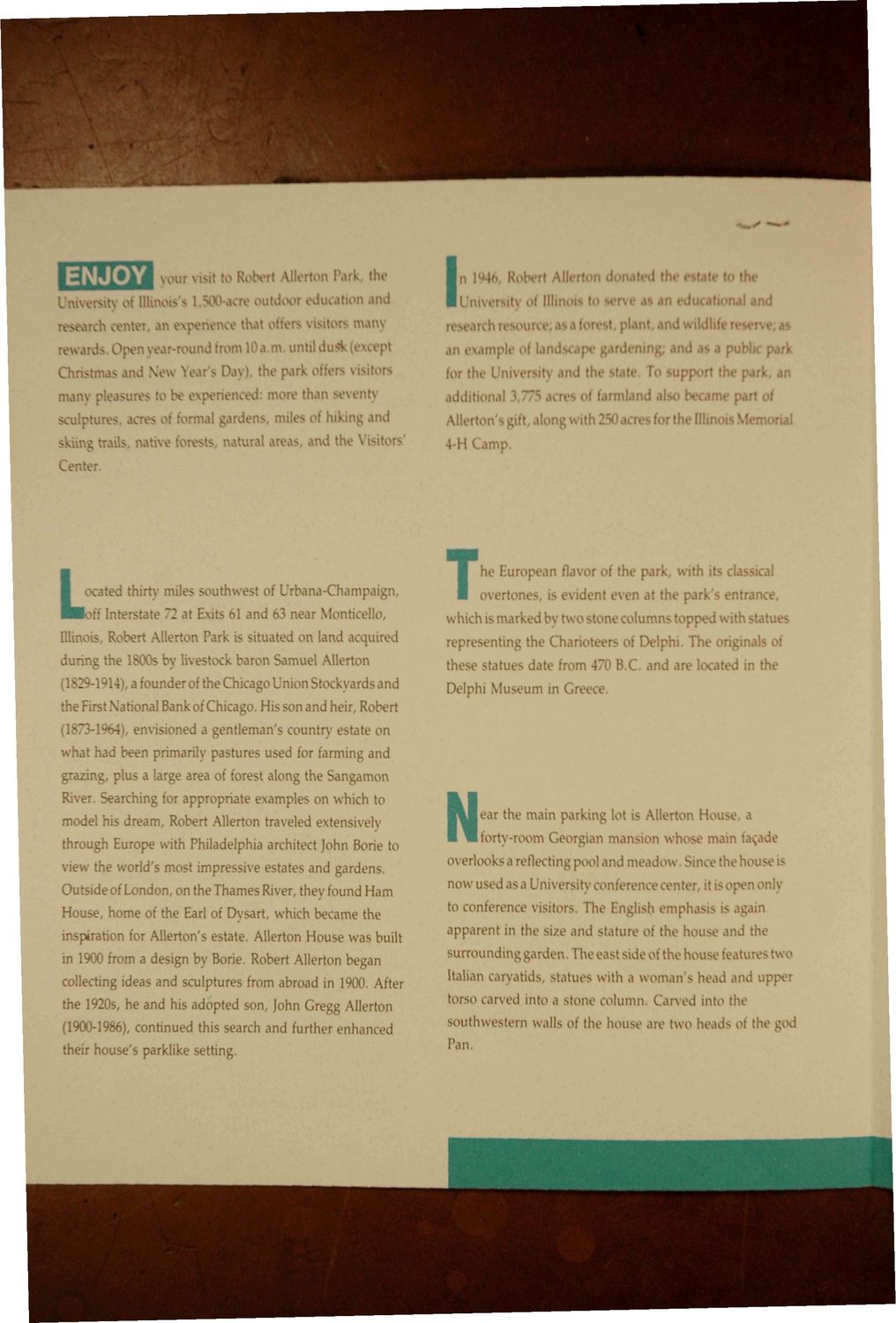Caption: Dedication - Allerton Park Guide (1950)
This is a reduced-resolution page image for fast online browsing.

EXTRACTED TEXT FROM PAGE:
ENJOY :r \ \H( I Park the i and uuu nl In; an npl< >r the Unh additional AlKri 4-H ll!i it! an ndwildl: the ia! and icentei anexp< >un< Chn man nath n. until d u d Da) the pari mc miles '1 ai t hiking I the \ i id a public park rid tf upport the park n rmJand became part of long w i t h i n »r the 1 1 1 emorial ted thir: miles southwest bana-Champaign, Inte ate "I at Exits 61 and 63 near Monticello. IUinc Robert Allerton Park is situated on land acquired during the 1800s by livestock baron Samuel Allerton (1829-191- a founder of the Chicago Union S: urdsand theF \ational Bank of Chicago. His son and heir, Robert (18?3-19t4 envisioned a gentleman's count state on what had been primarily pastures used for farming and grazing, plus a large area of forest along the Sangamon River. Searching for appropriate e mples on which to model his dream, Robert Allerton traveled extensively through Europe with Philadelphia architect John Bone to vie the world's most impressive estates and gardens. Outside of London, on the Thames River, thev found Ham House, home of the Earl of Dvsart, which became the inspiration for Allerton's estate. Allerton House was built in 1900 from a design by Borie. Robert Allerton began collecting ideas and sculptures from abroad in 1900. After the 1920s, he and his adopted son, John Gregg Allerton (1900-1986), continued this search and further enhanced their house's parklike setting. he Eur in fla > the park, with its c! f overt. evident even at the park's entrance, which is marked by tw !umi pped'. h statue representing the Chariot Delphi. The origina > f the tart date from 470 B.C nd loc d in the Delphi Mi urn in Gn. r the main parking Ml< I H forty-room Georgian mans >n wh main 1 s overlooks a reflecting p landmi low :hoi: now used as a University enl tl) to conference visitors. The English empha is again apparent in th< ,md stature of the hou< i the surrounding garden. The east side of the house featui two Italian caryatids, statue- with a woman's head M\d upper torso carved into a stone lumn. Caned into the southwestern walls of the house are two heads ol the god
|